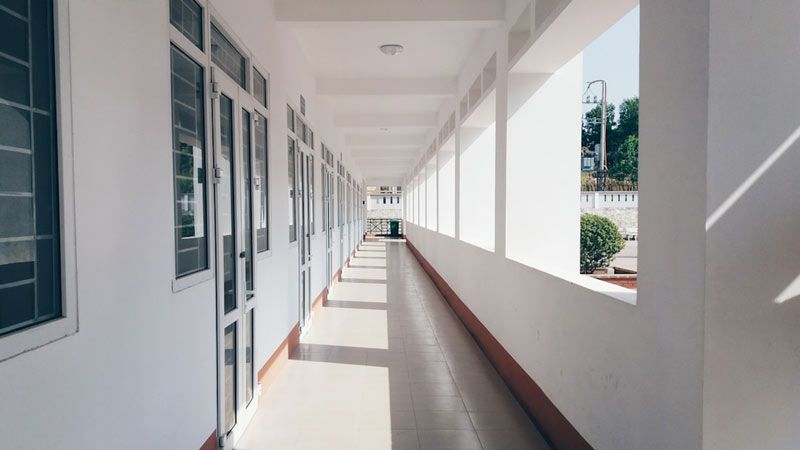In an age where school security is of paramount importance, visitor management systems have become fundamental components for maintaining a safe learning environment. These systems not only streamline the check-in process for guests but also enhance the security protocols of educational institutions. By properly documenting and controlling access, schools can deter potential threats and respond to emergencies more effectively. Implementing such a system, however, requires careful consideration of the school’s unique needs and the willingness to adapt to technological advancements. Keep reading to explore the insights and strategies for integrating effective visitor management in schools.
Understanding Visitor Management Systems and Their Importance in Schools
A Visitor Management System (VMS) is a crucial tool for schools to monitor guest entry efficiently and securely. By replacing traditional paper logbooks with digital records, VMS ensures accurate visitor screening, ranging from basic sign-in solutions to advanced platforms cross-referencing visitor identities with national databases.
In today’s climate of heightened safety concerns, the importance of VMS cannot be overstated. It not only keeps unwanted visitors out but also documents and authorizes those entering the premises, contributing to a secure educational environment.
During emergencies, VMS facilitates quick accountability of everyone on campus, aiding first responders in their timely intervention. Immediate alerts to faculty and staff enable swift responses to potential security threats among visitors.
In the educational setting, a robust VMS fosters trust within the community by reassuring parents of their children’s safety and the school’s preparedness to handle unforeseen circumstances efficiently.
Selecting the Right Visitor Management Software for Educational Institutions
Selecting the right software for enhancing school security through visitor management is pivotal. The ideal Visitor Management System (VMS) should seamlessly integrate with the existing security infrastructure while offering user-friendly interfaces and customizable options tailored to the school’s needs. Ensuring robust data storage and management capabilities is crucial, especially for safeguarding sensitive visitor information in compliance with privacy regulations and cybersecurity standards.
Key features to prioritize include instant background checks, photo identification, and badge issuance for visitors. Additionally, functionalities like pre-registration for events can streamline the visitor management process, enhancing overall security measures in schools.
When evaluating VMS options, requesting demonstrations and trials allows stakeholders to assess the software’s suitability firsthand. This hands-on approach facilitates a better understanding of how the VMS aligns with the specific requirements of visitor management in schools.
Implementing Visitor Check-in Protocols for Enhanced School Security
Selecting the right system is crucial, followed by establishing clear visitor check-in protocols to ensure the security of students and staff. All visitors, including parents and contractors, must check in without exceptions.
Visible guidelines should detail the process from entry to exit, including identity verification, photo capture, and badge printing displaying entry time and date. Regular reviews and updates are essential to adapt protocols to evolving security threats and technology.
Visitor check-in protocols serve as both a deterrent and response mechanism, effectively tracking visitor movement to reduce incidents and enable swift reaction when needed.
Integrating Visitor Management with School’s Existing Security Infrastructure

Integration is crucial for the seamless operation of a Visitor Management System (VMS) within a school’s security infrastructure. This entails aligning the new system with existing measures like surveillance cameras, access controls, and emergency protocols.
ool’s security infrastructure. This entails aligning the new system with existing measures like surveillance cameras, access controls, and emergency protocols.
Close collaboration between IT teams and vendors is essential to ensure compatibility and optimize functionality. For instance, the VMS should update visitor access permissions in real time and synchronize with other security components.
Effective integration streamlines visitor monitoring and management, often via a centralized platform. This consolidated approach enhances response times during emergencies, facilitating quick lockdowns if necessary. It’s vital to view visitor management as part of a broader safety framework in schools, encompassing student well-being, emergency readiness, and community involvement.
Training Staff and Communicating with Parents about the New Visitor Management System
A successful Visitor Management System (VMS) relies on well-trained staff and clear communication with parents and the community. Staff training should cover all aspects of the software, with periodic updates to stay current. Informing parents and the community about the system’s benefits fosters support and understanding.
Feedback from both groups is crucial for identifying areas of improvement. This approach ensures everyone is aligned on the purpose and functionality of the VMS, enhancing overall safety measures at the school.
Overall, implementing a visitor management system in schools demonstrates a firm dedication to ensuring the safety of students and staff. Through thoughtful selection, integration, and communication strategies, educational institutions can establish a secure and inviting environment for all individuals on campus.

Reblog It collaborates closely with clients to develop tailored guest posting strategies that align with their unique goals and target audiences. Their commitment to delivering high-quality, niche-specific content ensures that each guest post not only meets but exceeds the expectations of both clients and the hosting platforms. Connect with us on social media for the latest updates on guest posting trends, outreach strategies, and digital marketing tips. For any types of guest posting services, contact us on reblogit.webmail[at]gmail.com.
